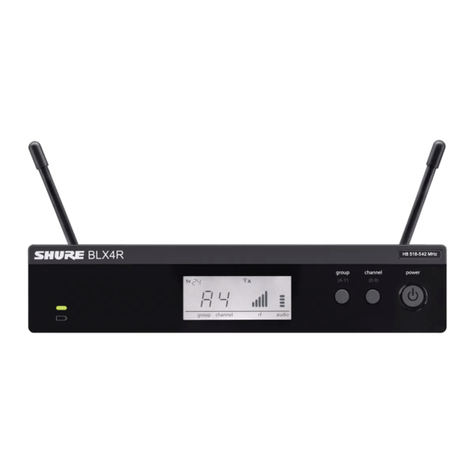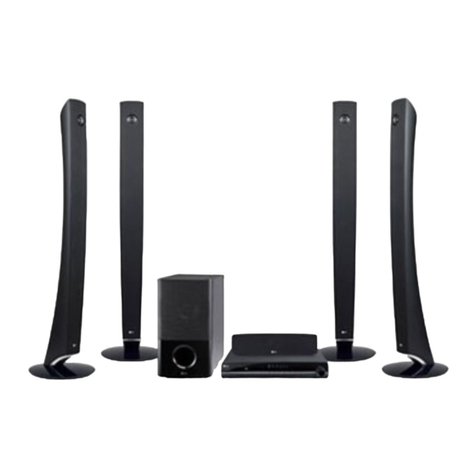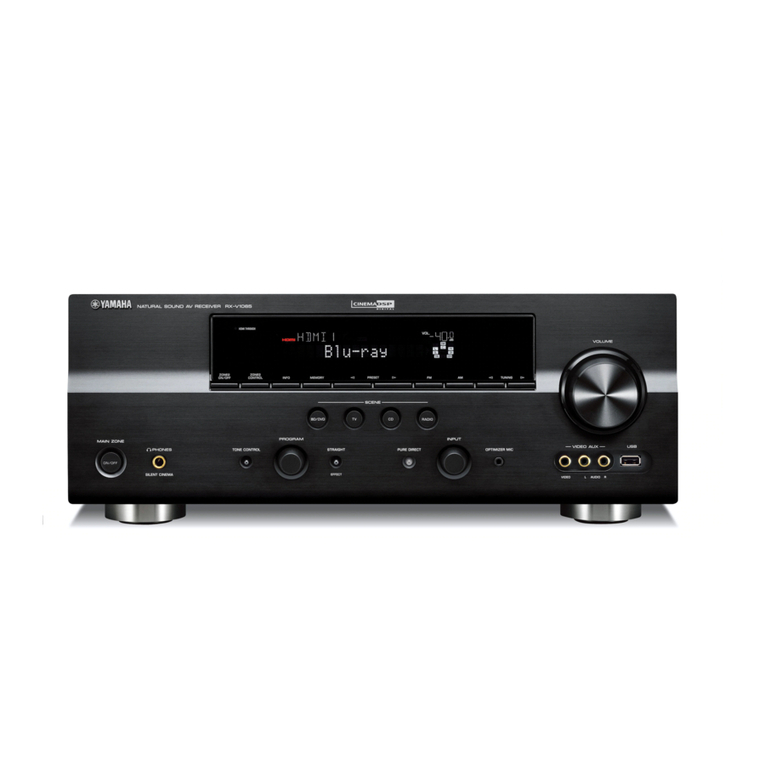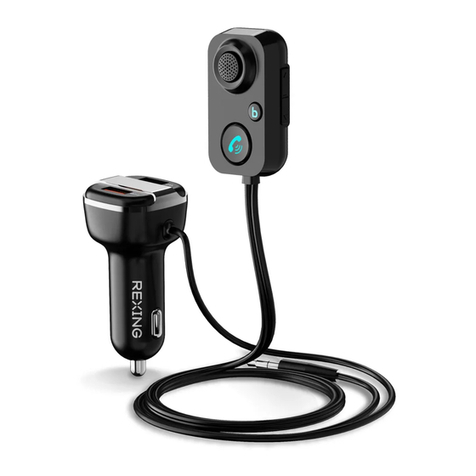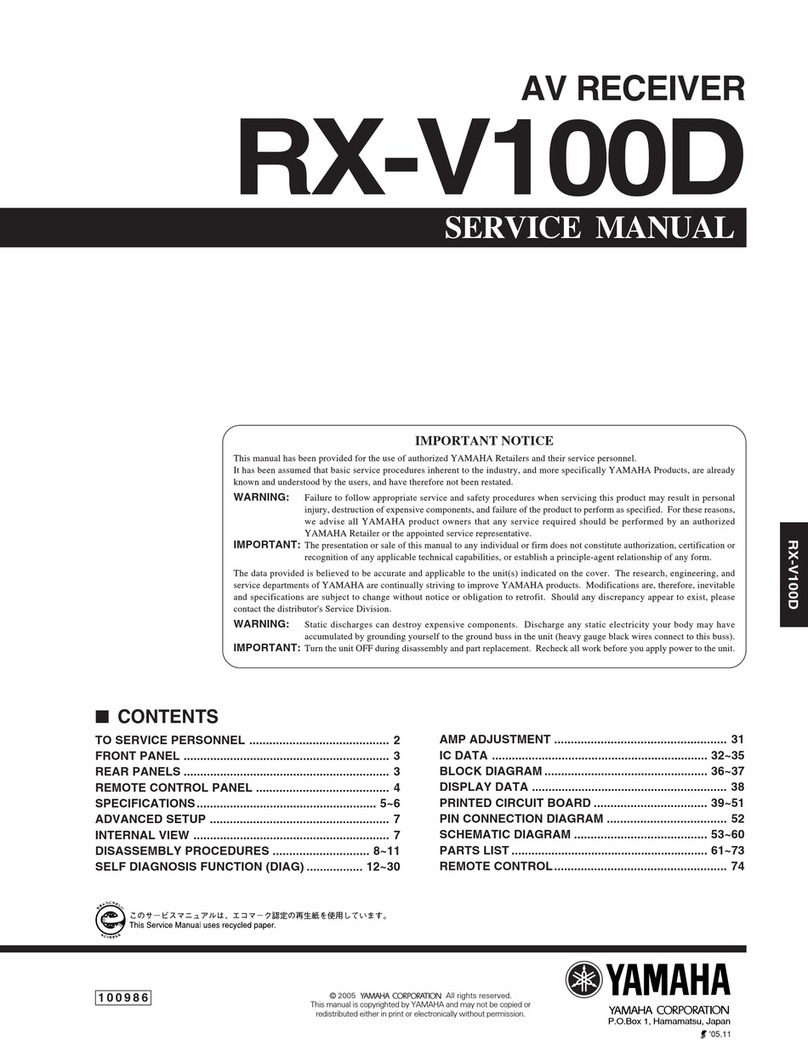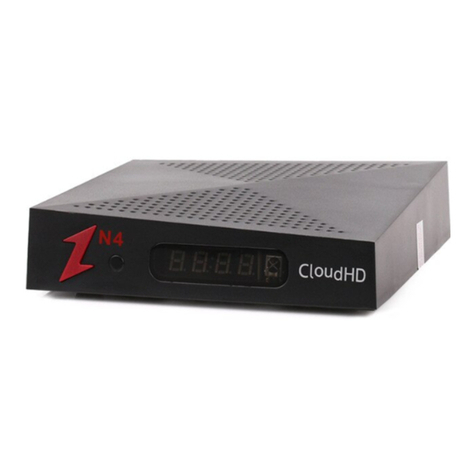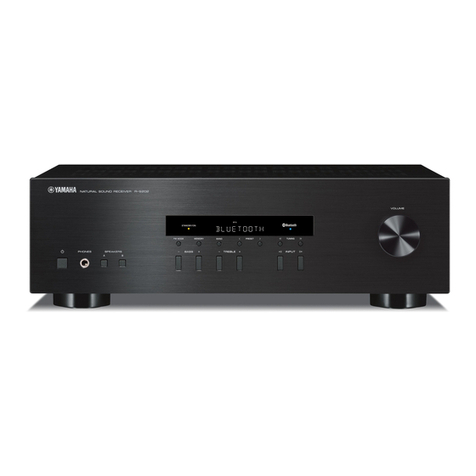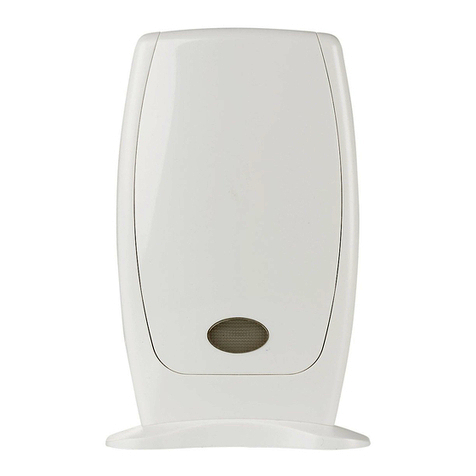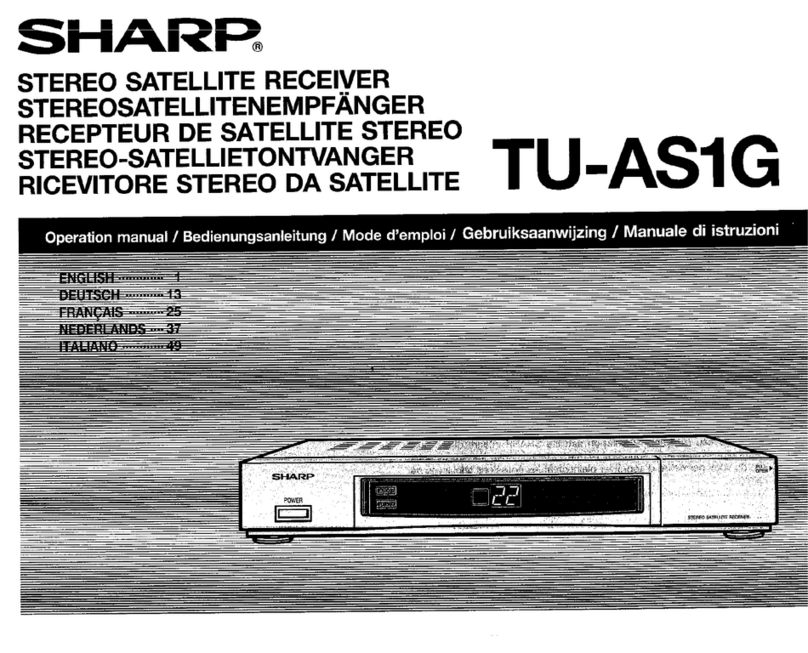Bookham New Focus 2307 User manual

-~
ARTISAN
®
~I
TECHNOLOGY
GROUP
Your definitive source
for
quality
pre-owned
equipment.
Artisan Technology
Group
Full-service,
independent
repair
center
with
experienced
engineers
and
technicians
on staff.
We
buy
your
excess,
underutilized,
and
idle
equipment
along
with
credit
for
buybacks
and
trade-ins
.
Custom
engineering
so
your
equipment
works
exactly as
you
specify.
•
Critical
and
expedited
services
•
Leasing
/
Rentals/
Demos
• In
stock/
Ready-to-ship
•
!TAR-certified
secure
asset
solutions
Expert
team
ITrust
guarantee
I
100%
satisfaction
All
tr
ademarks,
br
a
nd
names, a
nd
br
a
nd
s a
pp
earing here
in
are
th
e property of
th
e
ir
r
es
pecti
ve
ow
ner
s.
Visit our website - Click HERE

USER’S GUIDE
Large-Area Balanced
Photoreceivers
Models 2307 & 2317
2584 Junction Ave. • San Jose, CA 95134-1902 • USA
23x7 LA Blncd Rcvr revA.fm Page 1 Tuesday, September 28, 2004 1:59 AM

Warranty
New Focus, Inc. guarantees its products to be free of defects for one year from
the date of shipment. This is in lieu of all other guarantees, expressed or implied,
and does not cover incidental or consequential loss.
Information in this document is subject to change without notice.
Copyright 2004, 2002–1998, New Focus, Inc., a division of Bookham
Technology plc. All rights reserved.
The logo, the logo, and NEW FOCUS, Inc. are
trademarks or registered trademarks of Bookham Technology plc in the U.S.A
or other countries. Products described in this document may be covered by one
or more patents in the U.S.A. and abroad.
Document Number 200306 Rev. A
23x7 LA Blncd Rcvr revA.fm Page 2 Tuesday, September 28, 2004 1:59 AM

Large-Area Photoreceivers Contents • 3
Contents
Operation 5
Introduction . . . . . . . . . . . . . . . . . . . . . . . . . . . . . . . . . . . . . . . . . . . 5
Using the Photoreceiver. . . . . . . . . . . . . . . . . . . . . . . . . . . . . . . . . 7
Checking the Battery. . . . . . . . . . . . . . . . . . . . . . . . . . . . . . . . . . . . 8
General Features & Principles 9
Photoreceiver Circuitry . . . . . . . . . . . . . . . . . . . . . . . . . . . . . . . . . 9
Optical Power and Output Voltage . . . . . . . . . . . . . . . . . . . . . 10
Frequency Response and Noise 11
Measuring Bandwidth. . . . . . . . . . . . . . . . . . . . . . . . . . . . . . . . . . 11
Measuring Noise. . . . . . . . . . . . . . . . . . . . . . . . . . . . . . . . . . . . . . . 11
Typical Frequency Response and Noise Spectra . . . . . . . . . 14
Common Mode Rejection. . . . . . . . . . . . . . . . . . . . . . . . . . . . . . 17
Using Filters and Optical Fiber 18
Characteristics 21
Physical Specifications . . . . . . . . . . . . . . . . . . . . . . . . . . . . . . . . . 21
Model 2307 Specifications . . . . . . . . . . . . . . . . . . . . . . . . . . . . . 22
Model 2317 Specifications . . . . . . . . . . . . . . . . . . . . . . . . . . . . . 23
Customer Service 24
Technical Support . . . . . . . . . . . . . . . . . . . . . . . . . . . . . . . . . . . . . 24
Service . . . . . . . . . . . . . . . . . . . . . . . . . . . . . . . . . . . . . . . . . . . . . . . . 24
23x7 LA Blncd Rcvr revA.fm Page 3 Tuesday, September 28, 2004 1:59 AM

4 • Contents NEW FOCUS, Inc.
23x7 LA Blncd Rcvr revA.fm Page 4 Tuesday, September 28, 2004 1:59 AM

Large-Area Balanced Photoreceivers Operation • 5
Operation
Introduction
The Model 23X7 is a general-purpose balanced
photoreceiver with a large-area photodetector. These
receivers can be powered by battery or by an external
±15-V power supply. There are two versions of the
Model 23X7 receiver, each based on a different
photodetector:
Complete specifications begin on page 21.
The large area of the photodetector makes it easy to
couple light from a variety of sources (including diode
lasers, broadband sources, and light from optical
fibers) onto the detector without requiring precise
optical alignment or focusing. Figures 1 and 2 on the
following page show the typical responsivity curves
for the different detectors.
Model Wavelength Type Diam.
2307 400–1070 nm silicon 8 mm
2317 800–1750 nm germanium 5 mm
Note:
Note:
23x7 LA Blncd Rcvr revA.fm Page 5 Tuesday, September 28, 2004 1:59 AM

6 • Operation NEW FOCUS, Inc.
Figure 1:
Typical
responsivities
of the Model
2307 & 2317
photodiodes
For more information on frequency response and noise, see
page 11.
The photoreceiver’s slim casing, shown on the next
page, makes it easy to position it in a set-up between
closely spaced optics. The switches and BNC output
connector are located on top of the receiver for easy
access.
Figure 2:
The Model
23X7 casing
A full mechanical diagram of the Model 23X7 casing is
available on page 21.
0.0
0.2
0.4
0.6
0.8
1.0
Wavelength, nm
200 400 600 800 1000 1200 1400 1600 1800 2000
Responsivity, A/W
Model 2307
Model 2317
Note:
Note:
photodetectors
2x 1.040-32 THD
for mounting
Model 1280 Filter
Holders and
Model 1281 FC
Fiber Adapters
(not included)
output BNC
gain-setting switch
power switch
battery check LED
Note:
Note:
23x7 LA Blncd Rcvr revA.fm Page 6 Tuesday, September 28, 2004 1:59 AM

Large-Area Balanced Photoreceivers Operation • 7
Using the Photoreceiver
1. Check the battery voltage. The Model 23X7 can
be powered by a single 9-volt alkaline battery or an
external power supply. If you are using a battery,
check the battery condition by pushing the red
power switch to the BATT CHK position. If the
green LED lights up, the battery is in good condi-
tion; if the LED does not light, the battery needs to
be replaced (see page 8).
2. Mount the photoreceiver. Use the 8-32 thread
(M4 for metric versions) on the bottom of the
casing to mount the photoreceiver to a post or
pedestal.
The threading is seated in a non-conductive plastic pad to
reduce the electrical noise associated with ground loops. Be
careful not to over-tighten when attaching the casing to a
post or pedestal, or the threaded insert can strip out of the
plastic pad.
3. Connect the receiver output. Connect your
voltmeter, oscilloscope, or other instrument to the
Output BNC connector on top of the receiver.
4. Turn the power switch to “on.” The output
voltage should register on your scope or other
instrument.
5. Align optical beams onto the detectors.
Be careful to keep the optical intensity for each
detector under the damage threshold (6 mW/mm2
for Model 2317, 10 mW/mm2for the Model 2307).
6. Adjust the gain. Use the black switch on top of
the receiver to set the gain to low, medium, or high.
The bandwidths vary with the gain setting (the
label on the front of the photoreceiver indicates
the gain and bandwidth values).
7. Balance the optical input levels. Alternately
block each diode and observe the signal strength.
When they are approximately equal and opposite,
23x7 LA Blncd Rcvr revA.fm Page 7 Tuesday, September 28, 2004 1:59 AM

8 • Operation NEW FOCUS, Inc.
adjust their relative intensity until the balanced
output is zero volts.
8. Turn the receiver off. When you are finished
with the receiver, return the power switch to the
“off” position.
Checking the Battery
The Model 23X7 is powered by a single, standard 9-volt
alkaline battery. Under normal operating conditions
with low light levels and a high impedance load
attached to the BNC connector, the photoreceiver
draws about 1 mA from the battery, and the battery
lifetime is approximately 500 hours.
To check the condition of the battery, push the red
power switch to the BATT CHK position. If the green
LED lights up, the battery is in good condition.
When the battery voltage falls below about 6.5 volts,
the green LED will not light up, and the battery should
be replaced.
Replacing the Battery
1. Turn the red power switch to “off” to prevent
damage to the receiver.
2. Remove the screw on the back of the photore-
ceiver casing and remove the back cover.
3. Unplug the old battery by rotating it away from
the circuit board about the snap-on terminal
contacts.
4. Install a new 9-volt alkaline battery.
5. Reinstall the back cover and screw.
6. Check the battery level as described above.
23x7 LA Blncd Rcvr revA.fm Page 8 Tuesday, September 28, 2004 1:59 AM

Large-Area Balanced Photoreceivers General Features & Principles • 9
General Features & Principles
Photoreceiver Circuitry
The circuitry inside the Model 23X7 consists of two
photodiodes followed by an electronic gain stage. The
black switch on top of the casing allows you to select
one of three gain settings: low (2x103V/A), medium
(105V/A), and high (2x106V/A). The label on the front
of the casing lists the gain and bandwidth values for
each of these three gain settings. The amplifier design
is optimized so it consumes a minimum of power and
generates a minimum of noise at each of the gain
settings. A simplified schematic of the Model 23X7
circuitry is shown in Figure 3.
Figure 3:
Functional
schematic of
the Model 23X7
circuitry
-
-
+
-
+
+15 V
-5 V Regulated
+5 V Regulated
-15 V
GND
BATT
9 V
2 K
LOW
+5 V
ON-OFF
DETECTOR
HOUSING IS
GROUNDED
BNC
J2
20 R
HIGH
R
-5 V
100 K
MED-HIGH
LOW-MED R
100
RELAY
(switches automatically
when +15 V applied)
23x7 LA Blncd Rcvr revA.fm Page 9 Tuesday, September 28, 2004 1:59 AM

10 • General Features & Principles NEW FOCUS, Inc.
Optical Power and Output Voltage
The typical operating range for these receivers is from
a few nanowatts up to 2 to 5 mW (depending the
model and gain setting). Be careful to keep the
differential optical power under the maximum optical
power difference of 10 mW to avoid damaging the
photodetector.
To compute the approximate output voltage for a given
input optical power use the relationship
Vout = (Pin+Pout)·R·G,
where Pin and Pout are the input optical powers in
Watts on the right and left photodiodes respectively, R
is the photodetector’s responsivity in A/W (see page 6
for typical responsivities), and Gis the amplifier’s
trans-impedance gain in V/A.
For example, the Model 2307 on the medium gain
setting and with 10 µW of optical power at 900 nm on
one photodiode will have an output voltage of
approximately (10 µW)·(0.6 A/W)·(105V/A) = 0.6 V.
The maximum differential optical power that can be
detected by the photoreceiver is determined by the
input optical power at which the transimpedance gain
stage saturates. We can calculate the saturation power
at 900 nm for the Model 2307 at its maximum output
voltage of ±4 volts.
Using the expression 4 V = Psat·R·G, the Model 2307 has
a differential saturation power of 3.3 mW for the low
gain setting, 67 µW for the medium gain setting, and
3.3 µW for the high gain setting. At other wavelengths
where the responsivity is lower, the saturation power
increases inversely with responsivity.
23x7 LA Blncd Rcvr revA.fm Page 10 Tuesday, September 28, 2004 1:59 AM

Large-Area Balanced Photoreceivers Frequency Response and Noise • 11
Frequency Response and Noise
Measuring Bandwidth
The frequency response and noise characteristics of
the large-area photoreceiver depend on the selected
gain. The figures beginning on page 15 give the typical
frequency response and noise behavior for the
photoreceivers at each of the three gain settings—low,
medium, and high. The frequency response of the
transimpedance gain is plotted using the expression
20·log[Gain(ƒ)/Gain(0)],
where ƒis the frequency and Gain(0) is the gain at DC.
The photoreceiver’s bandwidth is defined as the
frequency where the gain has decreased by 3 dB, or a
factor of .
Measuring Noise
The photoreceiver noise is characterized using the
noise equivalent power (NEP), which is a measure of
the weakest optical signal that the photoreceiver can
detect. The NEP is the optical power which will
produce a signal-to-noise ratio of 1 in a 1-Hz
bandwidth. The minimum detectable optical power
can be found using the relationship
Minimum Optical Power = NEP · ,
where BW is the bandwidth. Note that NEP is a
wavelength-dependent quantity that changes with the
photodetector’s responsivity.
2
BW
23x7 LA Blncd Rcvr revA.fm Page 11 Tuesday, September 28, 2004 1:59 AM

12 • Frequency Response and Noise NEW FOCUS, Inc.
Another way to characterize the noise is with the
photocurrent noise (In), which is related to NEP by
In= R · NEP,
where Ris the photodetector’s responsivity. The
photocurrent noise is independent of wavelength
because it gives the photoreceiver’s noise with the
photodetector’s responsivity factored out.
To characterize the noise of the large-area
photoreceiver, the output electrical noise spectrum is
measured with a spectrum analyzer. This voltage noise
spectrum is converted to an equivalent optical
photocurrent noise by dividing the voltage noise by the
transimpedance gain (V/A). The photocurrent noise,
In(ƒ), has units of pA/ and is plotted in Figure 4 and
Figure 5 using the expression
20·log[In(ƒ)/1 A].
Calculating NEP
The noise equivalent power (NEP) can be calculated by
dividing the photocurrent noise by R, the detector’s
responsivity (see page 6).
From DC to 150 kHz the average photocurrent noise
for the Model 2307 on the high gain setting is about
2 pA/ , corresponding to an average NEP at 900 nm
of 3.3 pW/ . The integrated noise equivalent power
from DC to 150 kHz is then obtained by multiplying
the average NEP by , the square root of the
bandwidth.
The expression BW = 2πƒ3-dB/4 for a one-pole low-
pass filter is useful for calculating the equivalent noise
bandwidth. For the Model 2307 with a 3-dB bandwidth
of 150 kHz, the equivalent noise bandwidth is 235
kHz. This gives an optical noise equivalent power of
about 1.6 nW, so the minimum detectable optical
signal at 900 nm (with a signal-to-noise ratio of 1) for
the Model 2307 on the high gain setting is 1.6 nW.
Hz
Hz
Hz
B
W
23x7 LA Blncd Rcvr revA.fm Page 12 Tuesday, September 28, 2004 1:59 AM

Large-Area Balanced Photoreceivers Frequency Response and Noise • 13
You can further improve your signal-to-noise ratio by
using electrical filters or optical modulators or
choppers with lock-in amplifiers to limit the detection
bandwidth.
Calculating Output-Voltage Noise
The output-voltage noise can be calculated from
G · R · NEP · ,
where Gis the transimpedance gain (V/A), Ris the
photodiode responsivity (A/W), NEP is the average
noise equivalent power, and BW is the bandwidth. This
gives an output noise voltage for the Model 2307 on
the high gain setting of (2x106V/A) · (0.6 A/W) ·
(3.3 pW/ ) · =1.9 mVrms.
The Johnson noise at the input of a 100 MHz bandwidth
oscilloscope with 1 M-ohm input impedance is 1.6 mV rms.
This is often the limiting factor in broad-band measurements.
Summary
The Model 2307 on the high gain setting the average
NEP is 3.3 pW/ , and this yields an output noise
voltage of 1.9 mVrms. Viewed another way, for
operation at the peak responsivity wavelength of
900 nm and for the high gain setting, you will achieve a
signal-to-noise ratio of unity if the input power is
1.6 nW.
For the Model 2317 with large-area Germanium
photodiodes, the NEP at peak response wavelength of
1500 nm is 25 pW/ . Over the 30-kHz bandwidth,
the output noise voltage is 9 mVrms. The full
bandwidth signal-to-noise ratio of 1 is achieved
around 5 nW.
Note that this assumes operation without any post-
photoreceiver filtering and with the full photoreceiver
BW
Hz 235kHz
Hz
Hz
23x7 LA Blncd Rcvr revA.fm Page 13 Tuesday, September 28, 2004 1:59 AM

14 • Frequency Response and Noise NEW FOCUS, Inc.
bandwidth. By using an electronic band-pass filter or
an optical chopper and a lock-in amplifier, the receiver
can detect significantly weaker optical signals.
Typical Frequency Response and Noise Spectra
The 3-dB frequency bandwidth is defined as the
frequency where the photoreceiver’s transimpedance
gain has decreased by a factor of . The typical
frequency responses and noise spectra for the Model
2307 and Model 2317 are shown in the figures on the
following pages.
2
23x7 LA Blncd Rcvr revA.fm Page 14 Tuesday, September 28, 2004 1:59 AM

Large-Area Balanced Photoreceivers Frequency Response and Noise • 15
For the Model 2307 on the low setting the gain is
2x103V/A and the bandwidth is 1 MHz. The gain on
the medium setting is 105V/A, and the bandwidth is
200 kHz. The gain on the high setting is 2x106V/A,
and the bandwidth is 150 kHz. The noise spectrum is
plotted in units of photocurrent noise, pA/ .
Figure 4:
Typical
frequency
response and
noise spectra
for the
Model 2307
Hz
Model 2307, Low Gain Setting
-35.0
-30.0
-25.0
-20.0
-15.0
-10.0
-5.0
0.0
5.0
0 200 400 600 800 1000 1200 1400
Frequency (kHz)
Frequency Response (dB)
1.E-11
1.E-10
1.E-09
1.E-08
1.E-07
Current Noise
(A_rms/sqrt(Hz))
Model 2307, Med Gain Setting
-35
-30
-25
-20
-15
-10
-5
0
5
0 100 200 300 400
Frequency (kHz)
Frequency Response (dB)
1.E-13
1.E-12
1.E-11
1.E-10
1.E-09
Current Noise
(A_rms/sqrt(Hz))
Model 2307, High Gain Setting
-35
-30
-25
-20
-15
-10
-5
0
5
0 100 200 300 400
Frequency (kHz)
Frequency Response (dB)
1.E-13
1.E-12
1.E-11
1.E-10
1.E-09
Current Noise
(A_rms/sqrt(Hz))
23x7 LA Blncd Rcvr revA.fm Page 15 Tuesday, September 28, 2004 1:59 AM

16 • Frequency Response and Noise NEW FOCUS, Inc.
For the Model 2317 the bandwidth exceeds 150 kHz
(250 kHz for the unit pictured in Figure 5) for the low
gain setting, 30 kHz for the medium gain setting, and
30 kHz for the high gain setting.
Figure 5:
Typical
frequency
response and
noise spectra
for the
Model 2317
Model 2317, Low Gain Setting
-35
-30
-25
-20
-15
-10
-5
0
5
0 50 100 150 200 250 300 350 400 450
Frequency (kHz)
Frequency Response (dB)
1.00E-11
1.00E-10
1.00E-09
1.00E-08
1.00E-07
Current Noise
(A_rms/sqrt(Hz))
Model 2317, High Gain Setting
-35
-30
-25
-20
-15
-10
-5
0
5
0 5 10 15 20 25 30 35 40 45 50
Frequency (kHz)
Frequency Response (dB)
1.E-12
1.E-11
1.E-10
1.E-09
1.E-08
Current Noise
(A_rms/sqrt(Hz))
Model 2317, Med Gain Setting
-35
-30
-25
-20
-15
-10
-5
0
5
0 5 10 15 20 25 30 35 40 45 50
Frequency (kHz)
Frequency Response (dB)
1.E-12
1.E-11
1.E-10
1.E-09
1.E-08
Current Noise
(A_rms/sqrt(Hz))
23x7 LA Blncd Rcvr revA.fm Page 16 Tuesday, September 28, 2004 1:59 AM

Large-Area Balanced Photoreceivers Frequency Response and Noise • 17
Common Mode Rejection
Using the Model 23X7 balanced photoreceivers with
equal signal powers on each photodiode results in an
output with reduced common mode signal. The
common-mode rejection ratio, or CMRR, is a
measurement of the effectiveness of the balanced
subtraction.
Figure 6 shows the CMRR of each model using the
following definition:
CMRR = 20 · log(Vout1 - Vout2)/Vout1).
Figure 6:
Typical CMRR
for the
Model 2307
and Model
2317 at the low
gain settings
Model 2307 CMRR (Low gain setting)
-50
-40
-30
-20
-10
0
10
0 200 400 600 800 1000 1200 1400
Frequency (khz)
Frequency Response (dB)
I1,I2
I1-I2
Model 2317 CMRR (Low Gain setting)
-45
-40
-35
-30
-25
-20
-15
-10
-5
0
5
0 100 200 300 400
Frequency (khz)
Frequency Response (dB)
I1,I2
I1-I2
23x7 LA Blncd Rcvr revA.fm Page 17 Tuesday, September 28, 2004 1:59 AM

18 • Using Filters and Optical Fiber NEW FOCUS, Inc.
Using Filters and Optical Fiber
New Focus offers accessories to attach a 1"-diameter
filter or an optical fiber to the Model 23X7 large-area
photoreceiver. These accessories are sold separately,
and they are not supplied with the photoreceiver. Both
accessories attach to the photoreceiver using the 1.04-
32 threads located in the casing around the photo-
detector. Note that the accessories are also compatible
with two other New Focus products, the Model 215X
femtowatt photoreceiver and the Model 162X
nanosecond photodetector.
The Model 1280 1" filter holder allows you to mount a
1"-diameter optic in front of the photodetector. For
instance, you can mount a colored glass filter to
remove unwanted wavelengths or mount a neutral-
density filter to attenuate the optical power incident on
the photodetector. The Model 1280 has a plastic ring
for mounting a filter that is up to about 0.25" (6.4-mm)
thick. A thicker optic can be held in place using the 6-
32 nylon-tipped set screw. Use a 1/16" or 1.5-mm Allen
key or ball-driver to adjust the set screw.
The Model 1281 FC fiber adapter allows you to connect
an FC-connectorized fiber to the front of the photo-
detector.
See Figure 7 on the next page for drawings of these two
accessories.
23x7 LA Blncd Rcvr revA.fm Page 18 Tuesday, September 28, 2004 1:59 AM

Large-Area Balanced Photoreceivers Using Filters and Optical Fiber • 19
Figure 7:
Model 1280
filter holder
and
Model 1281
FC-fiber
adapter
0.63"
(15.9)
Model 1280
patent pending
dia. 1.30"
(33.0)
holes for
tightening
1.04-32
thread
Retaining ring
for holding 1"
or 25-mm optics.
6-32 nylon-tipped
setscrew for
holding 1" or
25-mm optics.
0.13"
(3.2)
FC connector
holes for
tightening
1.04-32
thread
0.35"
(8.9)
0.19"
(4.8)
Model 1281
23x7 LA Blncd Rcvr revA.fm Page 19 Tuesday, September 28, 2004 1:59 AM
This manual suits for next models
1
Table of contents
Other Bookham Receiver manuals
Popular Receiver manuals by other brands
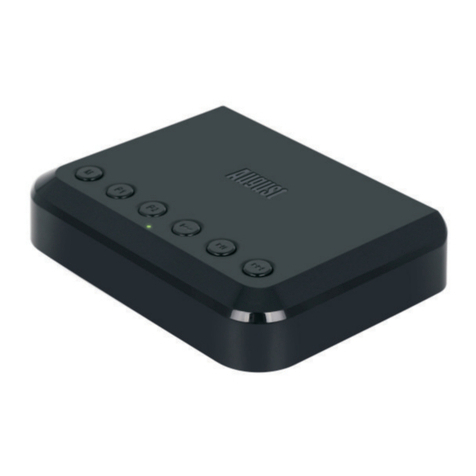
August
August WR320 user manual
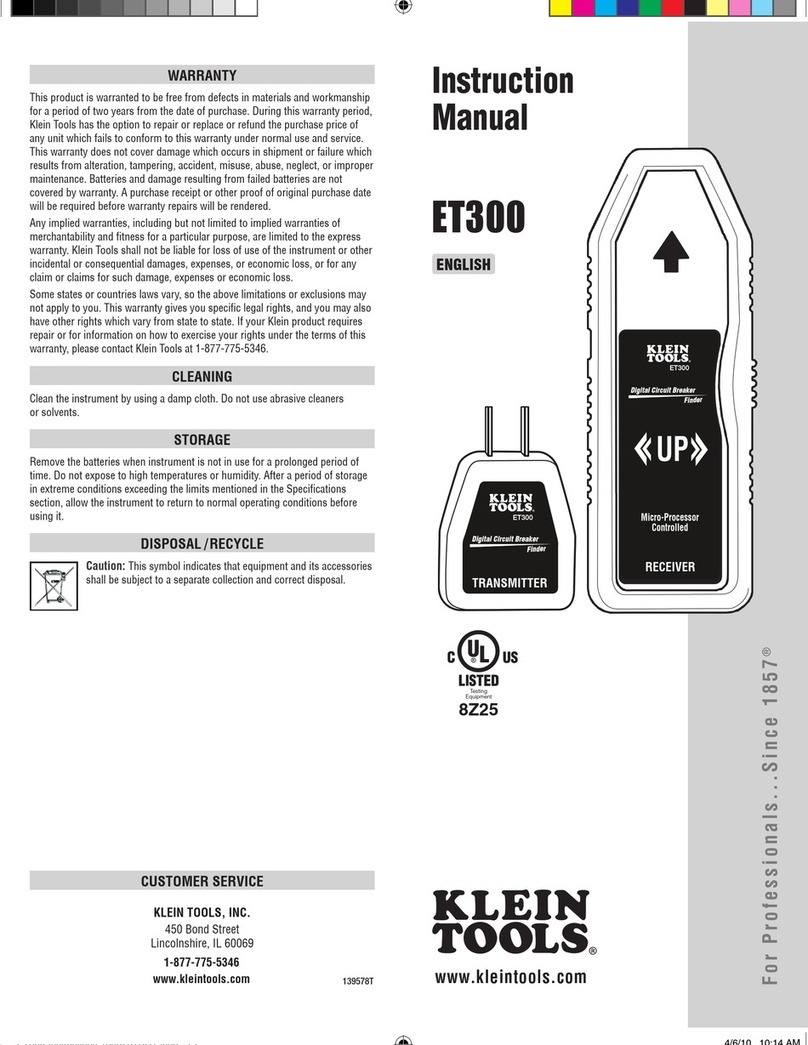
Klein Tools
Klein Tools ET300 instruction manual
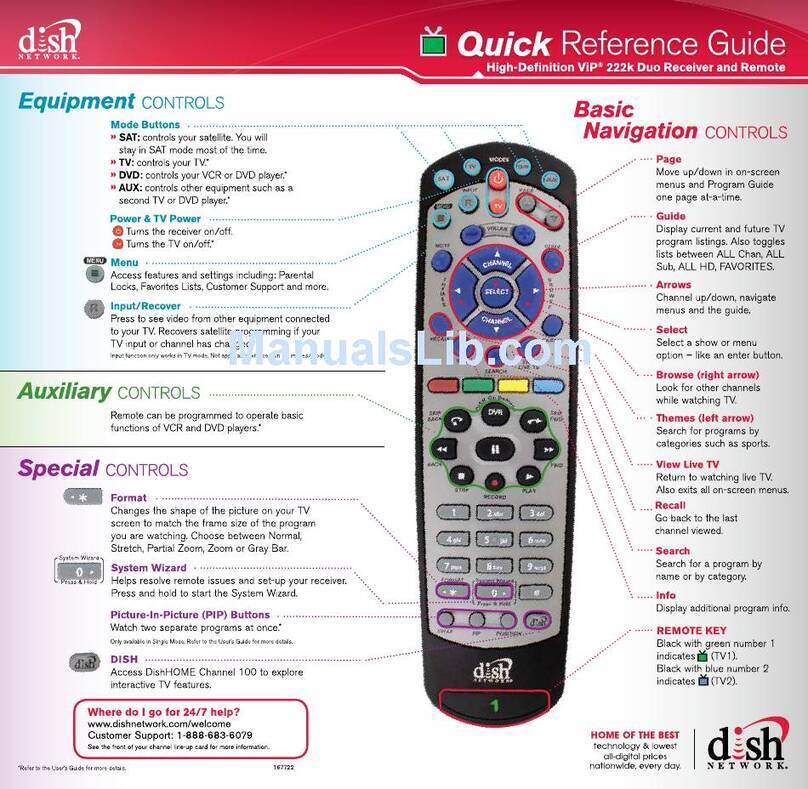
Dish Network
Dish Network High-Definition ViP 22k Duo Receiver and... Quick reference guide
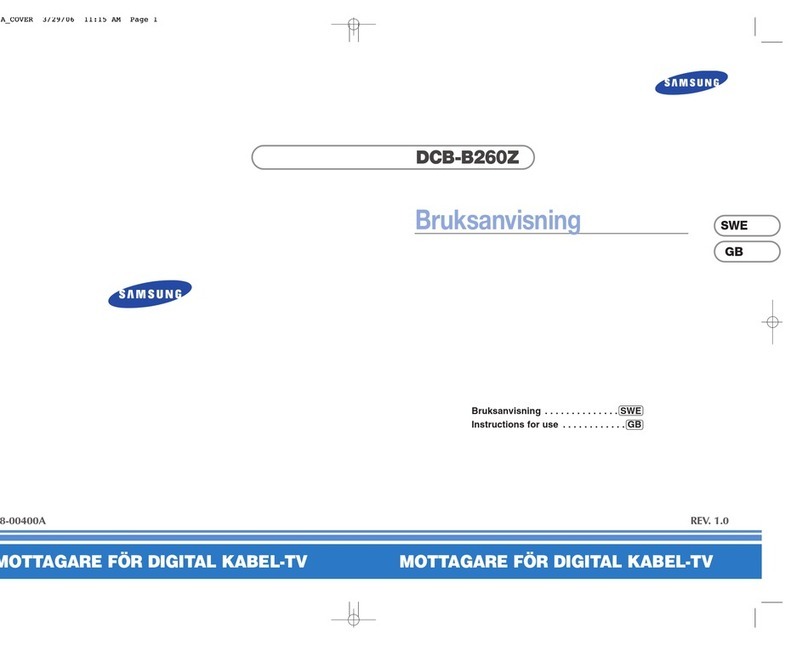
Samsung
Samsung DCB-B260Z Instructions for use
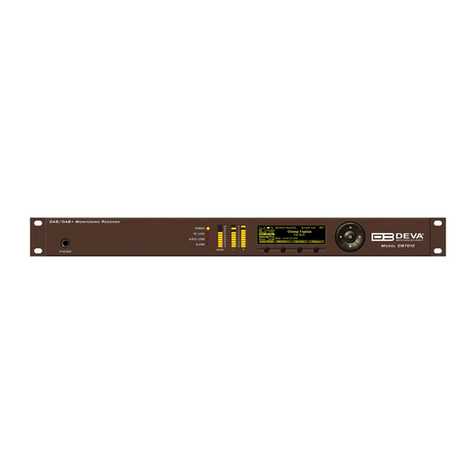
DEVA Broadcast
DEVA Broadcast DB7012 Maintenance and operation instruction manual
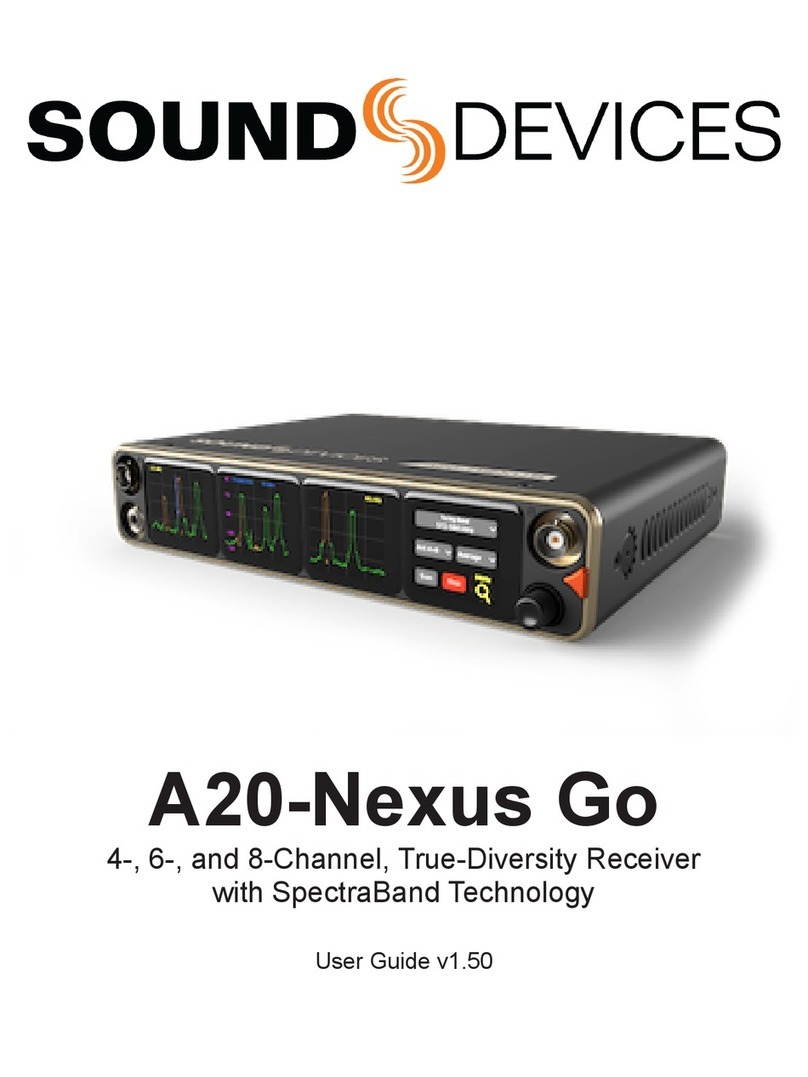
Sound Devices
Sound Devices A20-Nexus user guide

